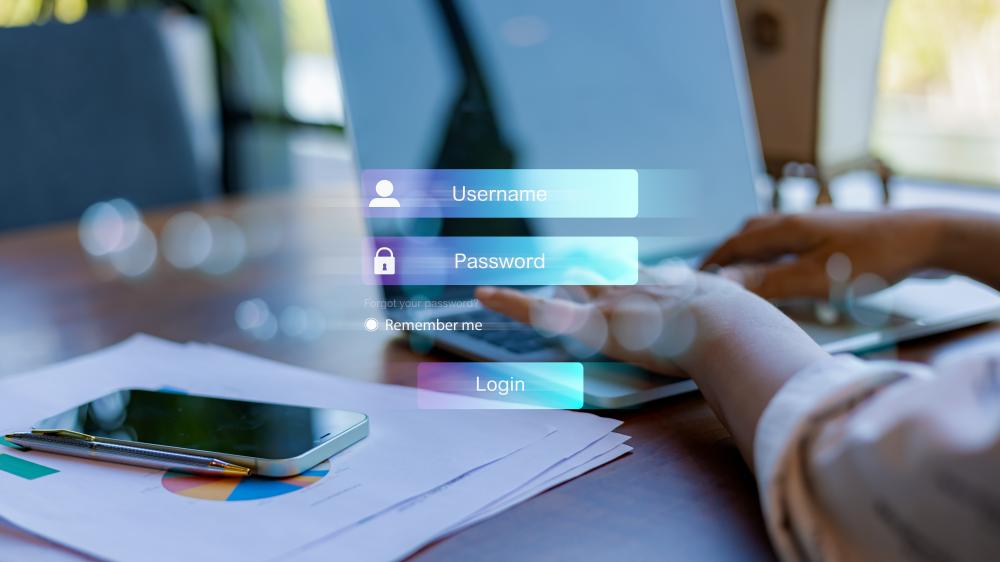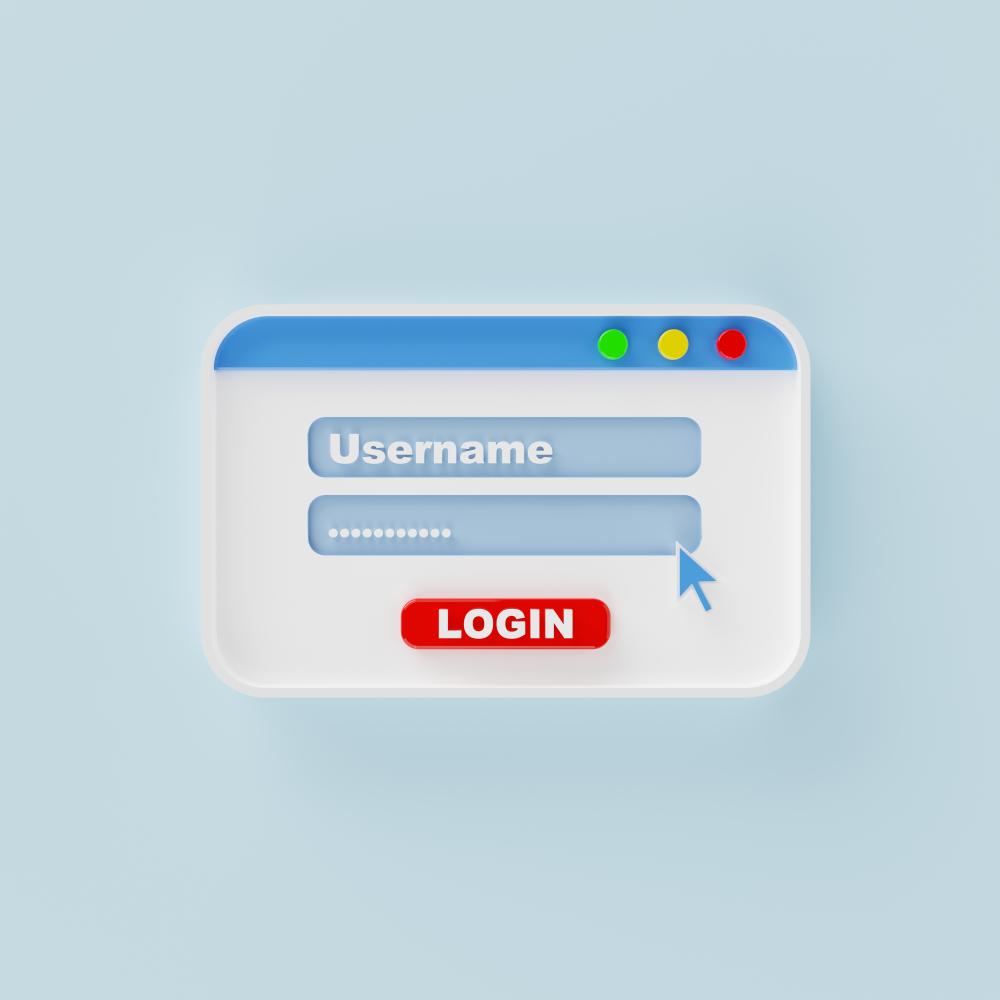The Importance of Securing Your IT Identity
Securing your IT identity has never been more critical. In today's digital age, where cyber threats are evolving at an alarming rate, maintaining robust identity security is paramount. Just as a locked door protects your home, securing your IT identity safeguards your digital assets. Companies like DomainBuy have long recognized this need, offering expert services to ensure that businesses and individuals can confidently navigate the digital landscape. By investing in identity security, you not only protect your data but also fortify your reputation against potential breaches.
The repercussions of failing to secure your IT identity can be catastrophic. From data breaches to financial losses, the stakes are high. As a professional with over two decades in the industry, I've seen firsthand the devastating effects of insufficient identity protection. Whether you're a small business or a global enterprise, the need for comprehensive identity security is universal.
How to Secure Your IT Identity
Securing your IT identity involves a multi-faceted approach. Here are the key steps:
- Implement Multi-Factor Authentication (MFA): Adding an additional layer of security beyond just a password can significantly decrease the risk of unauthorized access. Use MFA wherever possible to secure your IT identity.
- Maintain Strong Password Policies: Ensure that passwords are complex and changed regularly. Avoid using easily guessed passwords, and never reuse passwords across different accounts. This is crucial for any strategy to secure your IT identity.
- Utilize Privileged Access Management (PAM): Control and monitor access to critical systems by managing who has elevated access rights. Only grant access when absolutely necessary and regularly audit access logs.
Each of these steps plays a vital role in safeguarding your digital identity. By implementing these strategies, you can effectively secure your IT identity, minimizing the risk of cyber threats.
Exploring the Role of Zero Trust in IT Identity Security
Zero Trust is a pivotal concept in the strategy to secure your IT identity. The principle of "never trust, always verify" ensures that every access request is authenticated and authorized. At DomainBuy, we've adopted Zero Trust frameworks to enhance our clients' security postures, emphasizing the need for continuous validation of users and devices accessing network resources.
Integrating Zero Trust principles can drastically reduce the risk of unauthorized access. It ensures that every digital interaction is scrutinized, preventing attackers from exploiting stolen credentials. When combined with robust identity security practices, Zero Trust becomes a powerful tool in the arsenal against cyber threats.
Advanced Identity Threat Detection and Response (ITDR) tools serve as a vigilant guard in the effort to secure your IT identity. These tools constantly monitor for suspicious activity, enabling real-time responses to potential threats. In my years of experience, deploying ITDR solutions has proven invaluable for businesses seeking to stay ahead of cybercriminals.
- Real-time Alerts: ITDR tools provide immediate notifications of any irregular activity, allowing for swift remediation.
- Behavioral Analysis: By analyzing user behavior, these tools can distinguish between legitimate and suspicious actions, a key factor in maintaining security.
- Comprehensive Reporting: Detailed reports help organizations understand their threat landscape, providing insights into potential vulnerabilities.
For companies aiming to secure their IT identity decisively, the integration of ITDR technologies represents a significant advancement in threat prevention and response.
What Are the Common Risks to Your IT Identity?
Common risks to your IT identity include credential theft, phishing attacks, and privilege escalation. These threats can compromise your systems, leading to data breaches and financial loss. Understanding these risks is crucial to effectively secure your IT identity.
Credential theft is often the result of weak password policies or phishing schemes, where attackers pose as legitimate entities to extract sensitive information. Privilege escalation occurs when attackers exploit vulnerabilities to gain elevated access to critical systems.
Addressing these risks effectively requires a proactive approach: implement strong security measures, continuously educate employees about phishing tactics, and monitor access to your systems diligently. By doing so, you can ensure the robust protection of your IT identity.
In my two decades of experience with domains at DomainBuy, the strategic use of branded subdomains like Use it.com for Branding has proven invaluable. A branded subdomain not only provides an immediate situational context for your audience but also enhances the memorability and recognition of your online presence. It's a subtle nod to reliability and professionalism that can set your brand apart from competitors.
From personal experience, many of our clients have discovered that a subdomain matching their brand's identity resonates with users searching for specific products or services. This tactic, emphasized by branding experts, ensures that your digital footprint is consistent across various platforms. In today's digital era, where brand identity is everything, utilizing Use it.com for Branding becomes an anchor point for establishing a robust online persona.
Avoiding Common Brand Subdomain Mistakes
I've seen many businesses stumble when navigating domain selection. Choosing Use it.com for Branding without a plan can be fatal. First, avoid overly complex subdomain names; simplicity wins in memorability. If your audience cannot easily recall your subdomain, you risk losing them to simpler alternatives. Consider the example of a client who initially selected a long-winded subdomain, only to switch to a concise version later, which significantly boosted their site traffic.
The second pitfall is neglecting the potential evolution of your brand. A specific subdomain might suffice now, but how does it hold up as your brand expands? Ensuring flexibility is key. Lastly, don't ignore the technical aspects: always ensure your subdomain is compatible with SEO best practices and that it integrates smoothly with your website's architecture.
Steps to Implement Use it.com for Branding
Here's how you can effectively set up Use it.com for Branding:
- Identify your brand goal: Determine what you hope to achieve with a branded subdomain. Is it brand recognition, SEO, or direct traffic?
- Select a simple, memorable name: Opt for clarity and simplicity to ensure ease of recall.
- Consult with domain experts: Professional insights can guide you through potential pitfalls and strategic alignments.
- Ensure technical compatibility: Confirm that your subdomain integrates seamlessly with existing platforms and follows best practices for SEO.
- Consistently promote: Incorporate your subdomain into marketing strategies to enhance visibility and increase brand awareness.
By following these steps, you can make the most out of Use it.com for Branding, paving the way for a seamless and recognizable brand presence.
The Importance of Securing Your Digital Identity
As a professional with over 20 years in the domain industry, I've witnessed firsthand the evolving challenges of protecting a digital identity. When exploring the question, How Do I Secure My Digital Identity on it.com, it's crucial to recognize that your digital footprint is often as vital as your physical presence. It's more than just maintaining passwords; it's about ensuring privacy and security in a world that's continuously connected.
The digital realm makes life convenient, but it also opens doors for potential threats. With cybercrime on the rise, safeguarding your digital identity becomes paramount. At DomainBuy, we often assist clients in securing their online presence through domain services, but this is only one aspect of a comprehensive digital security strategy.
Your digital identity encompasses everything from your branded subdomain to your personal data. The first step in securing your digital identity involves being vigilant about where and how your information is used. From clients seeking advice, I've found that awareness and proactive measures often lead to greater digital security.
Key Steps to Secure Your Digital Identity
When seeking answers to How Do I Secure My Digital Identity on it.com, focus on practical steps that offer robust protection. Start with creating complex passwords unique to each of your accounts. Avoid using personal information such as birthdays or names to secure your accounts from potential breaches.
Consider implementing two-factor authentication (2FA) for an extra layer of security. At DomainBuy, we encourage clients to utilize 2FA across all online platforms, as it significantly reduces the risk of unauthorized access. Always remember, an extra login step is a small price to ensure your identity remains safe.
Frequent software updates are indispensable in maintaining an impenetrable digital wall. Hackers often exploit outdated systems, so ensuring your devices and applications are up-to-date is crucial. Integrate this practice into your routine, as it fortifies your defenses against new threats.
Empower yourself with knowledge about phishing attempts and malware. These digital threats are continually evolving, making it vital to stay informed. Regularly educate yourself and your team, if applicable, about recognizing and avoiding suspicious activities online.
The Benefits of Securing Branded Subdomains
A key question I often address is: How Do I Secure My Digital Identity on it.com effectively with my brand in mind? At DomainBuy, we specialize in helping clients secure branded subdomains. This simple yet powerful step not only enhances your online identity but also builds trust with your audience.
Branded subdomains provide a professional touch to your online presence, setting you apart from competitors. They ensure that your brand is easily recognizable, which is essential in today's saturated digital marketplace. Furthermore, securing a branded subdomain often deters potential impersonators, adding a layer of protection to your digital identity.
By choosing DomainBuy for your subdomain needs, you're investing in a reliable and user-friendly service. Our commitment to quality service means you get more than just a digital address; you gain a partner in maintaining your brand's integrity online.
Common Misconceptions About Digital Security
One prevalent misconception about securing your digital identity revolves around complexity. Many assume that digital security measures are too technical and cumbersome to manage. However, addressing the question How Do I Secure My Digital Identity on it.com can often be straightforward with the right guidance.
An effective strategy doesn't always mean complicated solutions. Simple practices, such as regularly reviewing privacy settings, can vastly improve your digital safety. I once assisted a client who was amazed at how minor adjustments in privacy settings elevated their online security.
Another myth is that cyber threats are rare and unlikely to happen to individuals. On the contrary, data from numerous studies suggest that cyber threats are prevalent and increasingly sophisticated. Dismissing these risks can leave you vulnerable to potential attacks.
- Misconception: Only businesses need to worry about digital identity.
- Reality: Individuals are equally at risk and should take precautions.
- Misconception: One strong password is all you need.
- Reality: A combination of measures, including password management and vigilance, is necessary.
Being proactive and informed are your best defenses against common digital security pitfalls.
Expert Tips: How Do I Secure My Digital Identity on it.com?
To address the critical question of How Do I Secure My Digital Identity on it.com effectively, employ the following expert-recommended strategies:
- Regularly audit your digital presence to identify vulnerabilities.
- Use a password manager to create and store complex passwords securely.
- Enable encryption on your devices and sensitive information.
- Monitor your accounts for unusual activity and set alerts for unauthorized access attempts.
What is the importance of securing your IT identity in today's digital landscape?
Securing your IT identity is crucial because it acts as the first line of defense against cyber threats, such as data breaches and identity theft. As cybercriminals become more sophisticated, maintaining a robust security posture helps protect sensitive data and safeguard your organization's reputation. At DomainBuy, we see securing IT identity as the digital equivalent of locking your front door at home. It's essential for both individuals and businesses to invest in comprehensive identity security to prevent financial loss and maintain trust with clients and customers.
What steps can I take to secure my IT identity effectively?
To secure your IT identity effectively, consider implementing multi-factor authentication (MFA) to add an extra layer of security. Additionally, maintain strong password policies, ensure complex and unique passwords for each account, and utilize privileged access management to control who has access to critical systems. At DomainBuy, we recommend these measures to our clients to minimize the risk of unauthorized access and enhance overall digital security. Have you considered which of these strategies you can implement today to boost your IT security?
How does the Zero Trust approach enhance IT identity security?
The Zero Trust approach enhances IT identity security by adhering to the principle of "never trust, always verify." This means every access request is authenticated and authorized before granting entry. At DomainBuy, we've integrated Zero Trust frameworks to ensure that our clients' security postures remain strong. By continuously validating users and devices, Zero Trust helps prevent attackers from exploiting stolen credentials and provides a higher level of protection against cyber threats. What steps have you taken to verify access requests in your organization?
Advanced ITDR tools play a critical role in safeguarding your IT identity by constantly monitoring for suspicious activity and providing real-time alerts. At DomainBuy, we've witnessed the power of these tools in enabling swift responses to potential threats. With features like behavioral analysis and comprehensive reporting, ITDR solutions help organizations stay ahead of cybercriminals. Have you evaluated how ITDR tools could address the unique security needs of your business?
What are the common risks to your IT identity, and how can you mitigate them?
Common risks to your IT identity include credential theft, phishing attacks, and privilege escalation. To mitigate these risks, implement strong security measures like multi-factor authentication, educate employees about phishing tactics, and regularly monitor access logs. At DomainBuy, we emphasize a proactive approach to security, as understanding and addressing these risks can significantly bolster your IT identity protection. How often do you review and update your security measures to counteract emerging threats?
Using it.com for branding can significantly enhance your online presence by providing a memorable and professional subdomain that resonates with your audience. At DomainBuy, we've seen our clients achieve increased brand visibility and customer trust through strategic subdomain usage. A well-chosen branded subdomain not only boosts SEO opportunities but also aligns with your marketing initiatives, setting you apart from competitors. How could a branded subdomain transform the way your audience perceives your business?
What are effective strategies for securing your digital identity on it.com?
Securing your digital identity on it.com involves using strong, unique passwords, enabling two-factor authentication, and keeping all software up-to-date. These practices protect against unauthorized access and data breaches. DomainBuy advises clients to be vigilant about where and how their information is used, as well as to educate themselves about phishing attempts and malware. How often do you review your digital security practices to ensure they are effective and up-to-date?
What are some common misconceptions about digital security, and how can they be addressed?
One common misconception is that digital security measures are too complex to manage. In reality, straightforward practices, like regular privacy setting reviews, can vastly improve your security. Another myth is that cyber threats are rare and unlikely to affect individuals. However, given their prevalence, individuals must remain proactive in securing their digital identities. At DomainBuy, we stress the importance of education and simple proactive measures. What misconceptions might be preventing you from strengthening your digital security?


